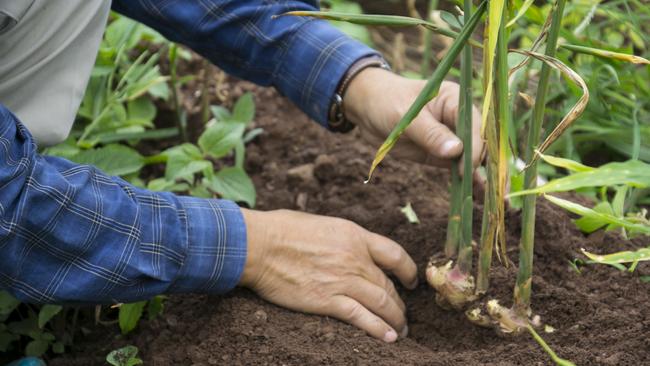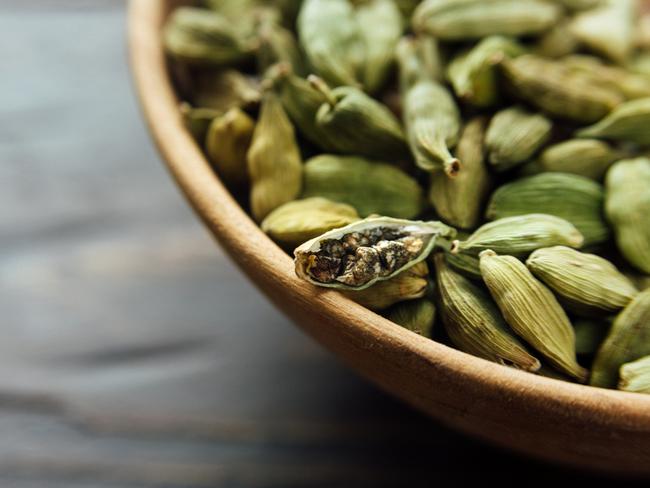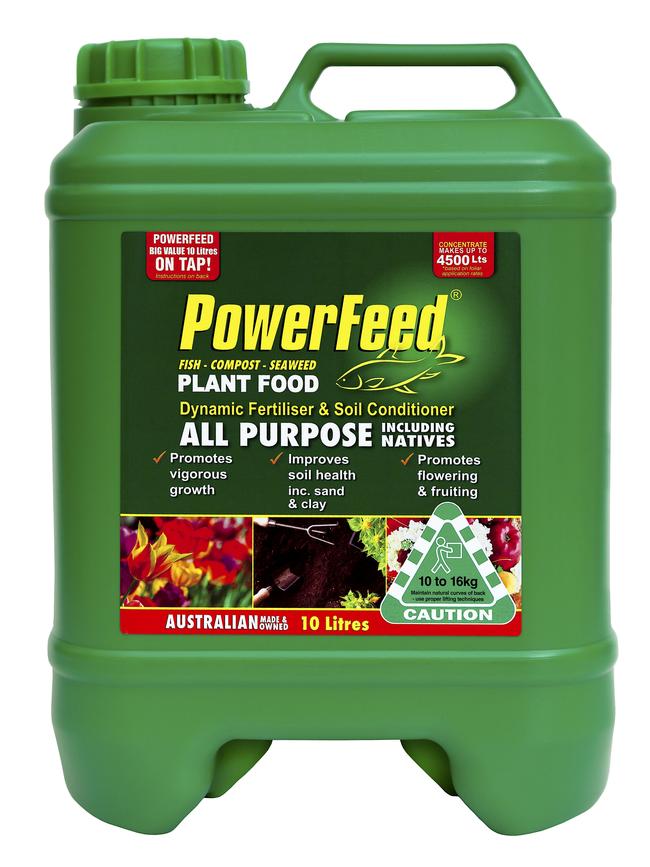How to grow ginger at home
Ever thought of growing ginger — and other aromatic edibles in the same family — at home? It’s easier than you might think.

Edible ginger is a surprisingly easy crop to grow, especially in sub-tropical and tropical climates. It doesn’t need much space, is fairly free from pests and diseases, and even grows in a pot.
Growing your own ginger not only avoids the high prices it often commands, it lets you harvest as needed, or when it’s sweetest and most succulent. Fresh ginger is in peak condition right now at a stage called baby or green ginger, when the knobbly rhizomes are creamy white with blushing pink bud scales. With practically no skin, and before the tough fibres have formed, it is tender, mild, sweet and juicy, but only keeps for a couple of weeks. It’s ideal for pickling.
Start your crop in early spring with a plump rhizome from a local farmers’ market or organic greengrocer. Avoid anything wizened or dry. Divide it into pieces about 5cm long that each have at least one “eye” or bud point where the shoots will form. Plant them about 2cm deep and 20cm apart into rich, well-drained soil with plenty of added compost and manures. Mounding the soil improves drainage. If you’re using pots, make sure they’re at least 40cm diameter and use best quality potting mix with some compost added. After watering in, keep the soil barely moist but increase water as the shoots develop.
Ginger grows quickly all summer, reaching 50cm to 1m high. Feed it monthly with pelletised poultry manure and keep plants mulched with sugar cane mulch or compost. Plants benefit from a little shade from neighbouring plants, as this also increases humidity.
After about six months you can harvest young rhizomes as baby ginger – but the main crop is harvested in autumn, when the foliage starts to die back, the skins have toughened and the flavour has intensified. Reduce watering towards harvest time, too.
In frosty areas, or regions where you have autumn and winter rains, pull out the whole crop. Wash the harvested rhizomes and leave them to dry for a week before storing in the fridge or freezer. In warmer, drier areas you can leave rhizomes in the ground over winter.
Edible ginger (Zingiber officinale) is just one of the many members of the varied ginger family Zingiberaceae. Others that are edible include turmeric, cardamom and galangal, all of which are grown in much the same way as ginger.
Turmeric (Curcuma longa) is more cold-tolerant than ginger and reaches 50cm to 1m high. The finger-like rhizomes are an intense orange colour – beware, it stains everything from fingers to benchtops. Dried and powdered turmeric is a staple ingredient in curries, and it’s also used as a dye and for medicinal purposes, being antiseptic and astringent. Leaves, shoots and the pretty white flowers can also be eaten, and steamed leaves used for wrapping fish.

Cardamom (Elettaria cardamomum) is grown for its aromatic seed pods rather than its roots. The 30-50cm-tall plants are fairly cold tolerant but they will only flower and set pods in tropical and sub-tropical regions.
Galangal (Alpinia galanga) reaches 1-2m high and is the most cold-tolerant of the edible gingers. It can stay evergreen in milder climates. Start harvesting in its second year by digging a few roots from the side of the clump as needed. The shiny, pink-skinned roots have a ginger/pepper/citrus flavour.
Q&A
Birds peck our ripening peaches, leaving small pits, but otherwise the fruit is good. Could viruses transfer from birds to humans through fruit? Sarah Childs, Lithgow, NSW
Birds carry various pathogens in their beaks and claws; bird flu is transmitted through infected faeces and saliva. Fruit should be thoroughly washed to minimise the slight risks, or ideally net the tree to keep birds out. Once fruit skin is broken, fungal decay sets in that further damages fruit.
My large deck, fully exposed to the northwest, desperately needs plant life. What could survive in large pots? Margie Aitken, Sydney
Bird of paradise (Strelitzia reginae), underplanted with trailing Tradescantia pallida (purple heart) is colourful and tough. Euphorbia ‘Firesticks’ is a contemporary, tall, colourful succulent – but beware, the sap can irritate skin. Small trees include frangipanis and olives. For masses of flowers, use dwarf bougainvilleas or the Aloha series of Mandevilla hybrids in pinks, reds and white, or the Mediterranean Rose series of small oleanders, or Hawaiian hibiscus.
We have white, pink and red frangipanis in abundance. Should I prune them? What’s the best way to combat rust disease? Michael Donovan, Brisbane
Frangipanis don’t need pruning but you can reduce their size if desired. Do this in winter, pruning back to a fork, not mid-stem, so you don’t leave ugly stubs. Appearing from mid-summer, the gold pustules of frangipani rust spread rapidly, causing leaf drop; rain and humidity favour it. Early intervention is best; put affected and fallen leaves in the bin, and spray with Yates Rose Shield or Eco-fungicide.

Send your questions to: helenyoungtwig@gmail.com or Helen Young, PO Box 3098, Willoughby North, NSW 2068. Website: helenyoung.com.au. The best question for February wins 10 litres of PowerFeed concentrate, the organic-based liquid fertiliser and soil conditioner from Seasol, worth $80. December/January’s winner is Kevin of Yarraville for his question about putting sugar on tree ferns.




To join the conversation, please log in. Don't have an account? Register
Join the conversation, you are commenting as Logout